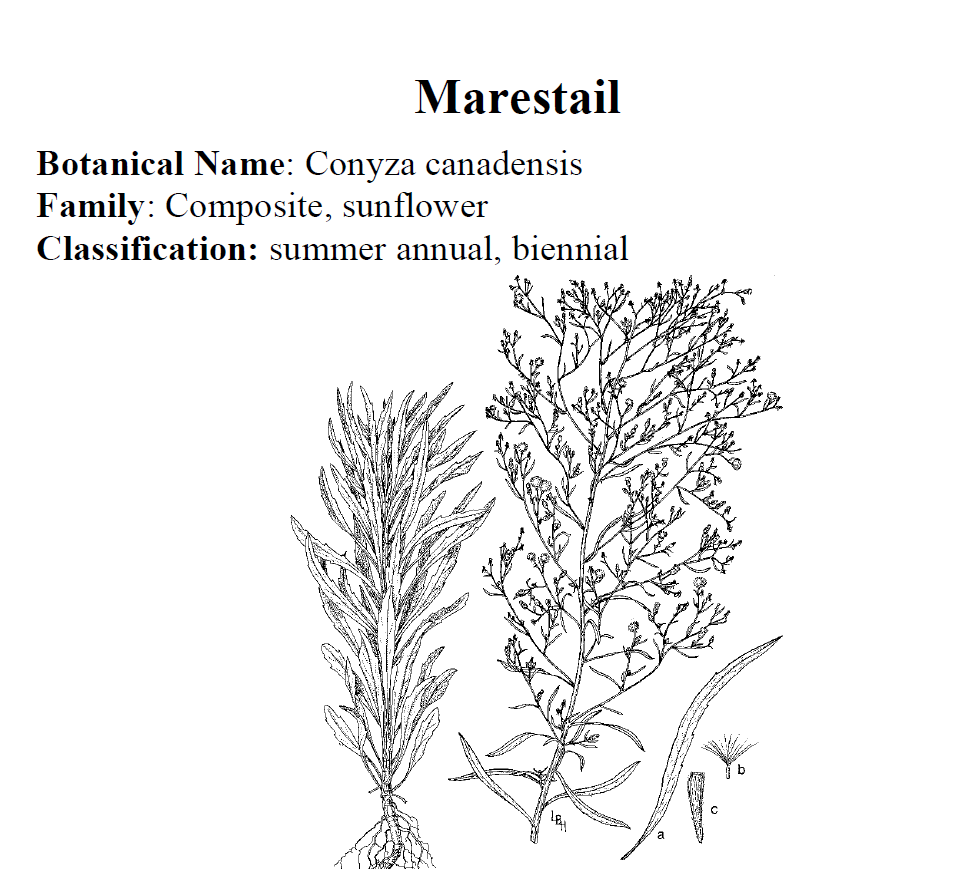May 13, 2015
Marestail, Horseweed (Conyza canadensis) 2015
There are herbicides and herbicide tolerant crops available now that farmers couldn’t even dream about 20 years ago. Weeds are still as much of a problem as they have ever been. Many of the weed species that are widespread now are those that evade our current management practices. Marestail is one of these survivors that has become an increasing problem in recent years. It is also known as horseweed and is in the sunflower or composite family. It can grow to 10 ft. in height and doesn’t branch until it is a couple feet tall. It does branch if it is cut however. Similar to many weeds here, marestail is supposed to be a summer annual but it can be found during the winter and survive for more than one season. It can be difficult to selectively control. Many of the broad spectrum systemic herbicides do not control it. The growth regulators (2, 4-D, 2, 4-DB, dicamba, MCPA) will twist it up but often not kill it. The ALS inhibitors (Raptor, Pursuit) are weak on it and even glyphosate often will not control it. Glyphosate resistant marestail is widespread in many regions. If it is small (6” or less) it can be controlled with some of the contact herbicides such as paraquat or Buctril which are difficult to use without hurting the crop especially during the summer. Chateau is good on it as a preemergent treatment before it germinates.




To contact Marco Pena go to: marcop@ag.arizona.edu





